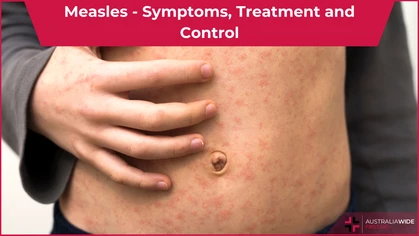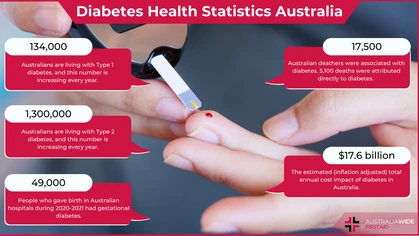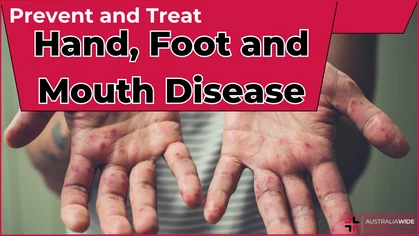Common Health Issues in Men

Disease
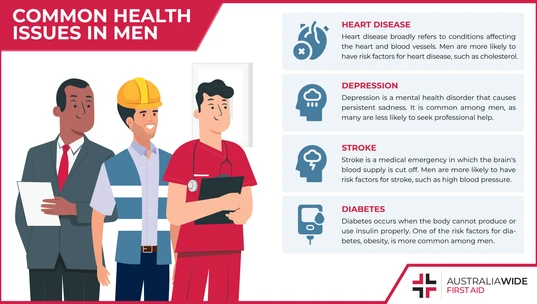
Some health conditions present differently in men, compared to women, due to a variety of biological and social factors. As a man, it is important to be wary of these conditions, so that you can take appropriate action to safeguard your wellbeing.
If you're a man, you must be aware of the common health issues that can affect you. Heart disease, cancer, diabetes, depression, or stroke are all influenced by smoking, drinking alcohol or being sedentary for long periods of time. Most Australian men would not consider themselves to be particularly health-conscious. Many men would probably say they don't think about their health until something goes wrong. And by then, it's often too late. This is because most men are unaware of the common health issues which affect them and therefore do not know how to identify or prevent them. Today we will look at the top five health risks for men and how they can be prevented through simple lifestyle changes such as eating a healthy diet, exercising regularly, and quitting smoking. So let's get started!Heart disease
What is it, and why is it more common in men? (compared to women)
Heart disease is a condition that affects the heart and blood vessels. In men, it is more common than in women because men are more likely to have risk factors for heart diseases, such as high blood pressure and cholesterol. Heart disease can lead to a heart attack, stroke, or other serious health problems. Some of the common types of this leading cause of death in men include:- Coronary artery disease
- Congestive heart failure
- Arrhythmia
- Valve Disease
- Myocarditis
- Pericarditis
- Cardiomyopathy
- Aortic aneurysm
- Aortic stenosis
- Pulmonary embolism
What are the major risk factors?
Several risk factors can contribute to your heart health problems. These include:- Alcohol consumption
- Smoking
- Obesity
- High blood pressure
- High cholesterol
- Stress
How to avoid these risk factors?
The best way to prevent heart disease is to live a healthy lifestyle, which means eating a healthy diet, having physical activity, reducing alcohol consumption and quitting smoking. Regular checkups with your doctor are essential to detect and treat any problems early.Cancer
What is it, what types of cancer are more common in men, and why?
Cancer is a disease that occurs when cells in the body begin to grow out of control. There are many different types of cancer, but some of the most common cancer types in men include:- Prostate cancer
- Testicular cancer
- Skin cancer
- Lung cancer
What are the major risk factors?
Many risk factors can contribute to cancer in men. These include:- Exposure to sunlight or other forms of radiation
- Smoking
- Obesity
- Family history of cancer
How to avoid these risk factors?
The best way to prevent cancer is to live a healthy lifestyle. This means eating a healthy diet, exercising regularly, and reducing your exposure to sunlight or other forms of radiation. It is also important to get regular cancer screenings so any problems can be detected and treated early.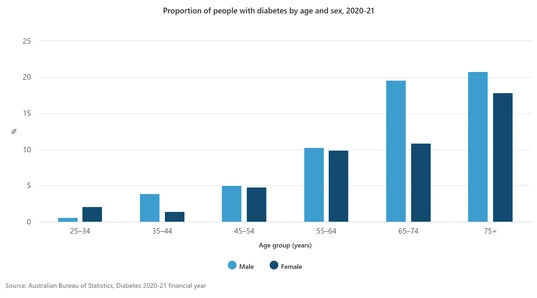
Type 2 diabetes was the most common type of diabetes (85.5%), followed by Type 1 diabetes (11.0%) and type not known by a person reporting (4.1%). (This analysis excludes gestational diabetes).
Diabetes
What is it, what type is more common in men, and why?
Diabetes is a condition that occurs when the body does not produce enough insulin or when it cannot use insulin properly. Developing diabetes leads to high blood sugar levels, which can cause health problems such as heart disease, stroke, blindness, kidney disease and nerve damage. There are two types of diabetes: type 1 and type 2. Type 2 diabetes is more common in men than women because it is often linked to obesity.What are the major risk factors?
According to the Australian Bureau of Statistics, in 2020, diabetes was ranked seventh in Australia's leading causes of death, with 5,148 deaths. In 2018, Type 2 diabetes was the twelfth contributor (2.3%) to Australia's total disease burden (fatal and non-fatal). Risk factors that can contribute to diabetes in men:- being overweight or obese
- having a family history of diabetes
- having high blood pressure
- having high cholesterol levels
- smoking
- drinking excessive amounts of alcohol
How to avoid these risk factors of diabetes?
Some things you can do to help prevent diabetes include eating a healthy diet, exercising regularly, and not smoking. Regular checkups with your doctor are essential to detect and treat any problems early.- eating a healthy diet
- maintaining a healthy weight
- getting regular exercise
- quitting smoking
- limiting your alcohol intake.
Depression
What is it, and why is it more common in men?
Depression is a mental health disorder that causes feelings of sadness and loss of interest in activities. It is more common in men than women, and it is thought that this may be because men are less likely to seek help for their mental health problems.What are the major risk factors?
One of the significant risk factors for depression is a lack of awareness and understanding of the condition. This can lead to a misdiagnosis or a delay in seeking help. Other risk factors include:- family history of depression
- stressful life events
- poor physical health
- Substances
- work-related stress
- relationship problems
- financial problems
- Illness
How to avoid these risk factors?
If you are experiencing symptoms of depression, such as feelings of sadness and loss of interest in activities, do not be afraid to speak to a doctor or mental health professional. There are many treatments available that can help you feel better. Some things you can do to help prevent depression are:- getting regular exercise
- eating a healthy diet
- limiting your alcohol intake
- talking to someone about your problems
- seeking professional help if you need it
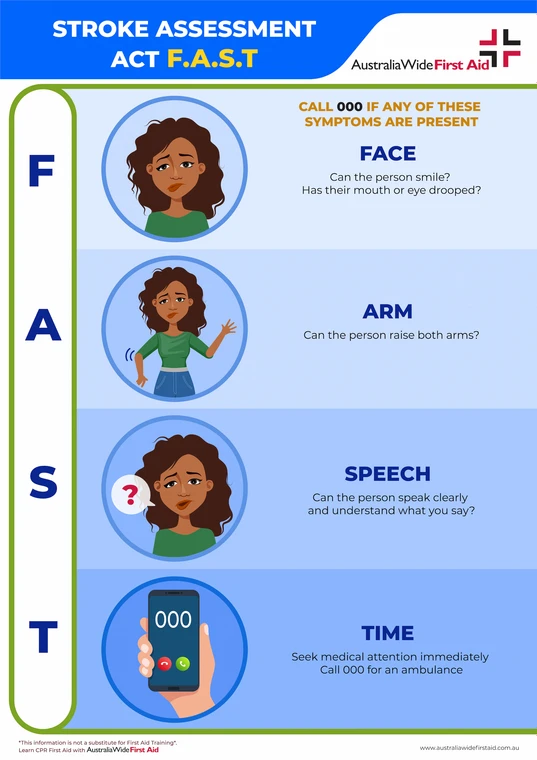
Tabacco smoking is the single most significant risk factor for stroke and is responsible for about one in every four strokes.
Stroke
What is it, and why is it more common in men?
A stroke is a medical emergency that occurs when the brain's blood supply is cut off. This can happen if a blood clot blocks an artery or a blood vessel bursts. Stroke is more common in men than women, and this may be because men are more likely to have risk factors for stroke, such as high blood pressure and smoking.What are the major risk factors?
According to the Stroke Foundation, in 2020, there were 27,428 Australians who experienced a stroke for the first time in their lives. That equates to one stroke every 19 minutes. The main risk factors for strokes are:- High blood pressure
- Smoking
- Diabetes
- Obesity
- High cholesterol
How to avoid these risk factors?
There are many ways to help reduce your risk of having a stroke. If you have any of the risk factors listed above, you must see your doctor and check your blood pressure, cholesterol and blood sugar levels. You can also help reduce your risk of stroke by:- Eating a healthy diet
- Exercising regularly
- Quitting smoking
- Limiting your alcohol intake
- Managing your stress levels
Final Thoughts
Keeping in mind that men don't think about their health as much as women, it's still vital to be aware of the common health issues that can affect them. Australia Wide First Aid is the leading provider of First Aid and CPR courses in Australia. Our courses prepare you with the skills and knowledge to save lives in various situations.
Originally published at
https://www.australiawidefirstaid.com.au/resources/common-health-issues-in-men
as part of the Australia Wide First Aid Articles Library




